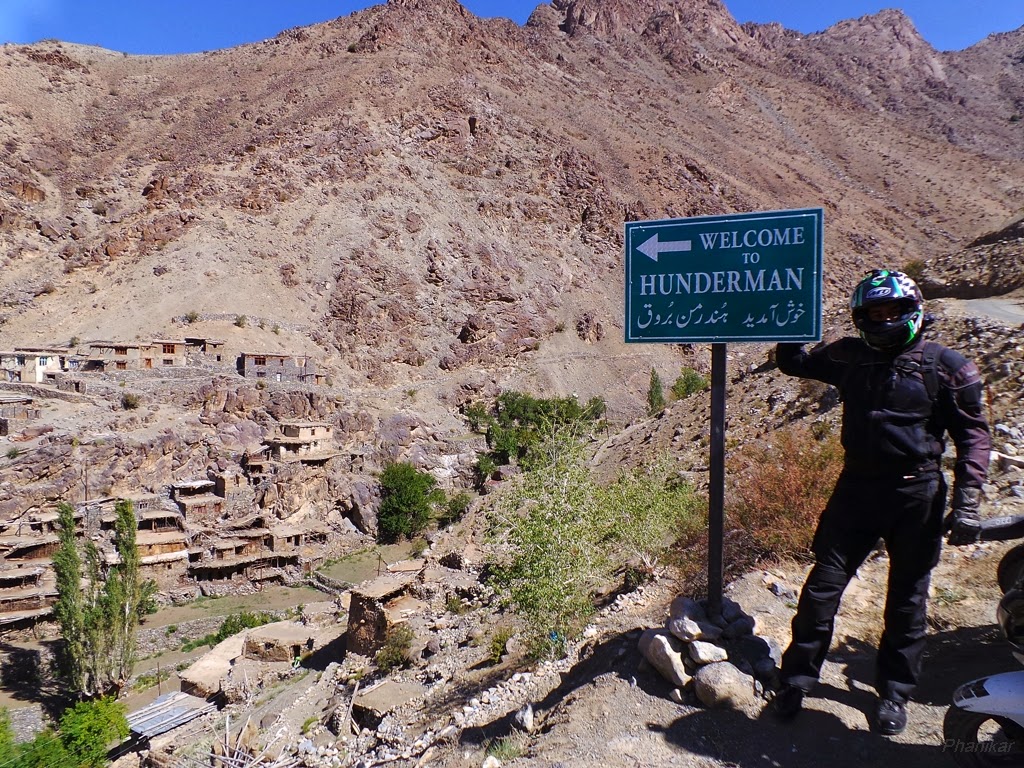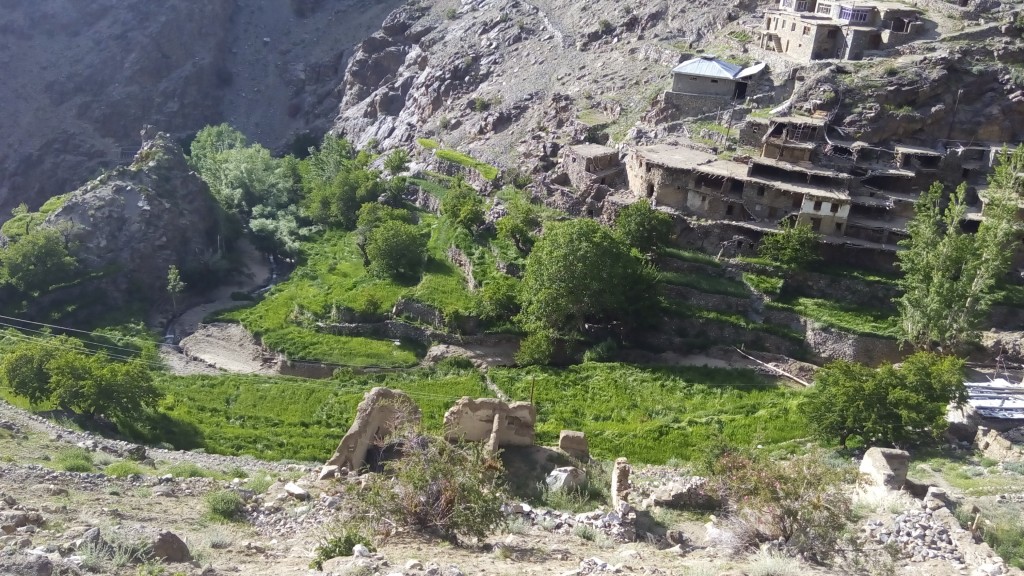Have a Look! This Forgotten Village Near Kargil Has an Unusual Museum of Memories
A nondescript village nestled amidst the craggy peaks of Kargil, Hunderman is home to a unique ‘Museum of Memories’ that documents the life of border families

A dusty, nondescript village nestled amidst the craggy peaks of Kargil, Hunderman has seen much over the centuries. Once an outpost on the historic Silk Route, the strategically-sensitive Himalayan hamlet has witnessed innumerable skirmishes and four wars with Pakistan (including the most recent Kargil war).
However, few know that the village is also home to Unlock Hunderman, a unique ‘Museum of Memories’ that documents the life of border families. Here’s the fascinating story behind this unusual milestone.

Located in a rugged valley between mountains over which the Line of Control (LoC) passes, the village of Hunderman found itself in a spot after India and Pakistan gained Independence. According to locals, the village has since been a part of two countries. Between 1947 and 1971, it was a part of Pakistan before it was taken into Indian control during the 1971 war in Gilgit-Baltistan.
Many villagers of Hunderman’s residents fled to Pakistan while the ones who chose to stay behind became Indian citizens overnight. Caught in the crossfire, most villagers faced a tough future. Other than a loss of livelihood, they also had to face the hostility of neighbouring villages.
In 1974,when a primary school was built in a small settlement in the upper parts of the valley, the villagers abandoned their old village (called Hunderman Brok) and moved to the new settlement. Here, they built clusters of mud-and-wattle houses for themselves and found employment as porters in the Indian Army.
United by the harshness of the terrain and the numbingly cold climate, the tightly-knit community began devoting their efforts to built a new future.

As for Hunderman Brok, it lay vacant for years, becoming a ‘ghost’ village with silent houses and weather-beaten artefacts lying scattered across its narrow paths. It was not until 2015 that Ilyas Ansari, a man with historical roots in the village, decided to do something about it.
With help from Muzammil and Tafazzul Hussain (founders of Roots Ladakh, a travel company centred around rural tourism) and Roots Collective (a local NGO that worked for cultural preservation), Ansari began converting his ancestral property (two small houses) in Hunderman Broqa into a museum.
Work on the project began, leading to the unearthing of all sorts of artefacts – from colonial era-perfume bottles and traditional Purgi jewellery to bullets from the Indo-Pak wars. Carefully restored, they were included in the museum’s fledgeling display. Ansari himself contributed letters from his family archives to the collection.
The restoration of the age-old artefacts was accompanied by the architectural documentation of the old settlement, by architect Debasis Borah and transcultural designer Hélène Thébault (director of Roots Collective). A stepped cluster of daub-and-wattle houses, the Hunderman Brok settlement has an unusual architecture.
From the outside, one cannot see steps or streets of any kind that provide access to the terraces. Also, the unique lever mechanism of the locking system of every house is hidden between a wall and the door, ensuring that only the owner knew how to open a door.
Interestingly, it was this unusual system that inspired the name of the museum.

The team also organised several workshops for artists and summer school students from CEPT, Ahmedabad. Of them, artists Kriti Gupta and Jagrut Raval decided to join the effort. Some of the local villagers also agreed to contribute relics from their time-worn trunks as well as long-forgotten stories about the village, its inhabitants and the impact of frequent wars.
The tireless efforts and dedication of the team paid off when the offbeat museum, titled Unlock Hunderman, received around 3,000 visitors in its first year itself. Other than reviving the lost stories of Hunderman through art residencies and research workshops, the team also hopes to bring Kargil out of the shadows of war and positively impact the livelihoods of the local community. As an increasingly popular tourist destination, the museum has the potential to do this and much more.
As Helene Thebault of Roots Collective told the Indian Express, “It’s a long journey. When the locals see us documenting mud structures and the landscape, they wonder why we want to preserve it. Our idea is to give back a lost heritage to the community.”

Today, as one enters the dwarf-doorway of Unlock Hunderman, the first thing that catches one’s eye is a framed letter penned by Ghulam Hussein, Ansari’s uncle, to his family. Visiting Skardu, (the capital of Gilgit-Baltistan in Pakistan) when the village came under Indian control during the 1971 war, he was never able to return home and died a lonely death in 2005.
The poignant letter Hussein wrote to his family was finally hand-delivered to his family in Hunderman years later. It now adorns the display of the village’s museum of memories, along with war shrapnel, handmade soaps, French coffee tins, British cutlery, Czech glassware and the first identity card issued to Ansari’s grandfather by the Jammu and Kashmir government.
So if you are heading to the Kargil valley anytime soon, take time to visit this unique museum in Hunderman Brok. If you have your own vehicle, its accessible through a motorable mountain road, or if you prefer public transport, there are a few shuttles that run between Kargil town and the village.
A two and half hour long trek (that offers some jaw-droppingly beautiful views of the valley) will also help you reach the village. However, do remember that the region remains cut off from the rest of the world during winter.
Also Read: The Stark Beauty of Dras, India’s Coldest Inhabited Place, Is Mysteriously Alluring
Like this story? Or have something to share? Write to us: [email protected], or connect with us on Facebook and Twitter.
NEW: Click here to get positive news on WhatsApp!
.
If you found our stories insightful, informative, or even just enjoyable, we invite you to consider making a voluntary payment to support the work we do at The Better India. Your contribution helps us continue producing quality content that educates, inspires, and drives positive change.
Choose one of the payment options below for your contribution-
By paying for the stories you value, you directly contribute to sustaining our efforts focused on making a difference in the world. Together, let’s ensure that impactful stories continue to be told and shared, enriching lives and communities alike.
Thank you for your support. Here are some frequently asked questions you might find helpful to know why you are contributing?


This story made me
-
97
-
121
-
89
-
167











